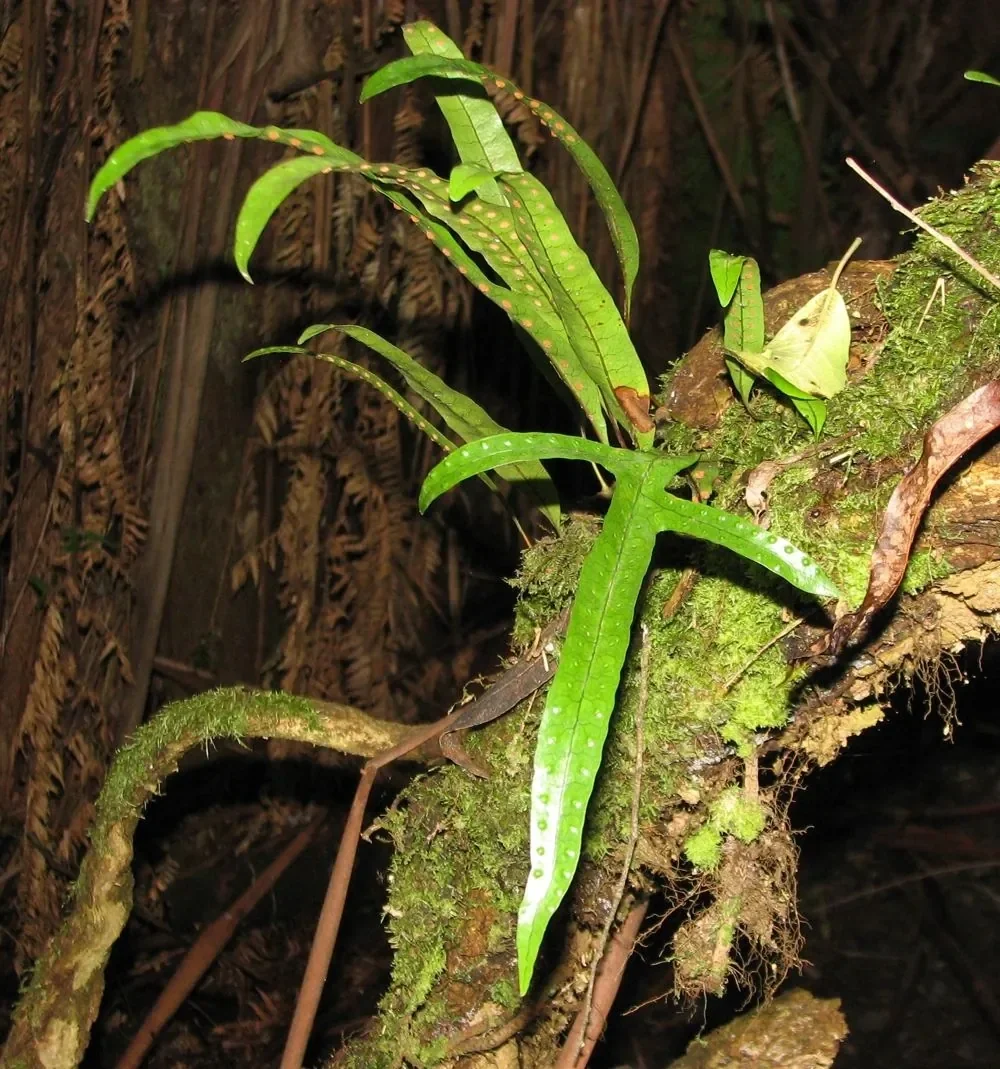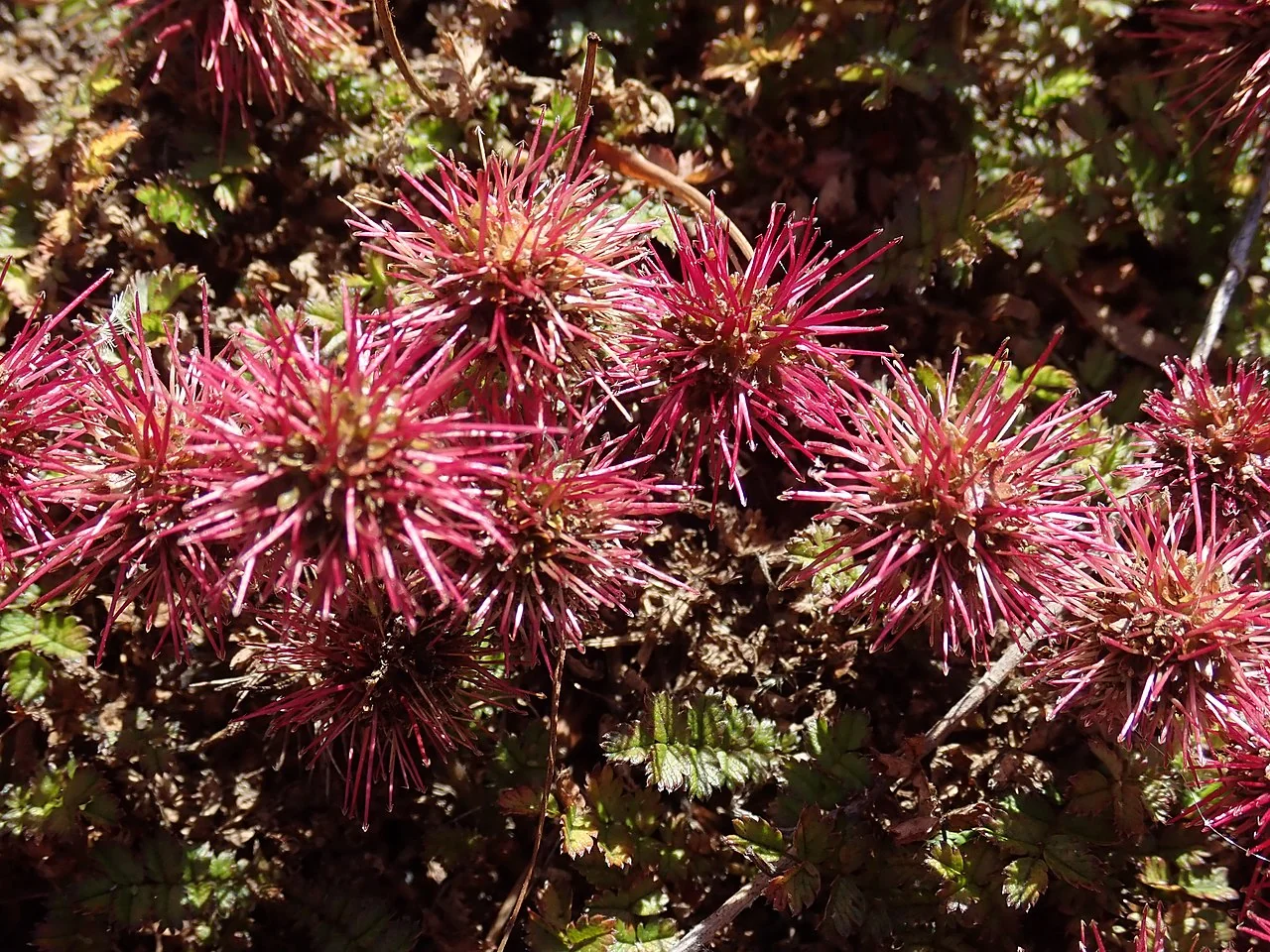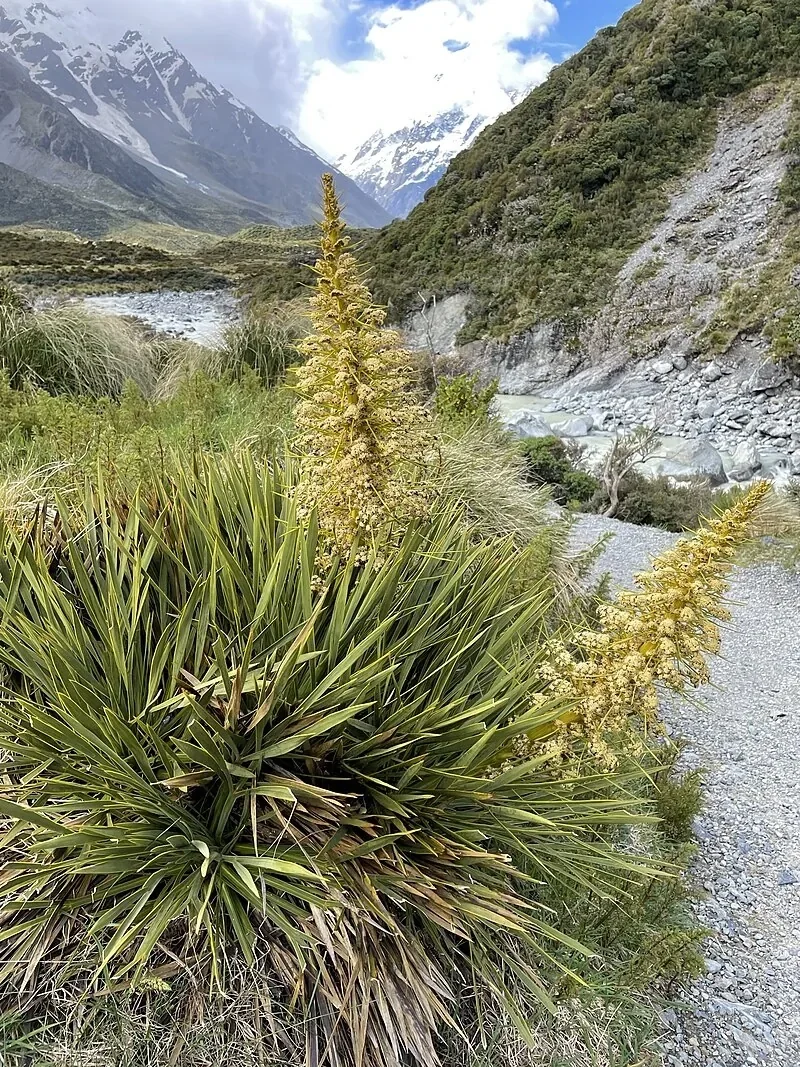
Kōwaowao
Microsorum pustulatum
Kōwaowao ( Microsorum pustulatum ), also known as Hound's Tongue Fern, is a distinctive native New Zealand fern, celebrated for its large, leathery, deeply lobed fronds and its epiphytic or lithophytic growth habit. This hardy fern is found throughout New Zealand, typically growing on tree trunks, rocks, or the forest floor in lowland and coastal forests. Its unique texture and rich green colour add a touch of primeval beauty to any landscape, making it an excellent choice for shaded, moist areas in native plant gardens or as a specimen in a fernery. Kōwaowao is a resilient and aesthetically pleasing fern that showcases the diversity of New Zealand's fern flora. For related species, see the native plants index .

Plant Description
Botanical Features
Kōwaowao ( Microsorum pustulatum ), also known as Kangaroo Fern or Hound's Tongue Fern, is an evergreen fern native to Australia and New Zealand. It can be found growing as an epiphyte on rocks and trees, or terrestrially. It features glossy, leathery, bright green fronds that are evergreen. The fronds can be highly variable; juvenile fronds are often strap-like and undivided, while mature fronds are typically larger (up to 50 cm long and 15 cm wide) and deeply, but incompletely, divided into lobes (pinnatifid). The edges of the fronds may be wavy. The fern has long-creeping, fleshy rhizomes that are typically 3-11 mm in diameter, covered with appressed, blackish-brown scales. The sori (spore clusters) are usually circular or ovate, 1-5 mm in diameter, and are sunken into the frond, creating corresponding bumps on the upper surface.
Quick Facts
| Scientific Name | Microsorum Pustulatum |
|---|---|
| Common Name | Kōwaowao, Hound's Tongue Fern |
| Family | Polypodiaceae |
| Height | Fronds up to 1 m long |
| Spread | Spreading, rhizomatous |
| Light | Partial shade to full shade |
| Soil | Moist, well-drained, humus-rich soils |
| Water Needs | Moderate to high |
| Frost Tolerance | Moderate |
| Salt Tolerance | Low |
| Growth Rate | Medium |
| Lifespan | Perennial |
Climate Best Suited to
Kōwaowao ( Microsorum pustulatum ) is native to New Zealand, typically found in lowland and coastal forests. It thrives in mild, temperate climates with high humidity and consistent rainfall. It prefers sheltered locations, protected from strong winds and harsh frosts. Its natural habitat includes damp forest floors, tree trunks, and rocks, indicating a preference for cool, shady, and moist conditions. It can be successfully cultivated in similar temperate regions, provided it has good drainage and protection from extreme heat or prolonged severe frosts.
Regional Suitability
| Whangārei | Ideal |
| Auckland | Ideal |
| Hamilton | Suitable |
| Rotorua | Suitable |
| Tauranga | Ideal |
| Gisborne | Ideal |
| New Plymouth | Ideal |
| Whanganui | Ideal |
| Palmerston North | Suitable |
| Napier | Ideal |
| Wellington | Ideal |
| Nelson | Ideal |
| Christchurch | Suitable |
| Dunedin | Suitable |
| Invercargill | Suitable |
| City | Climate Suitability |
|---|
Natural Habitat
Typical Environments
Understand the natural habitat of Kōwaowao ( Microsorum pustulatum ), which is found throughout New Zealand, in lowland and coastal forests. This section details its geographical distribution, preferred environmental conditions, and the types of ecosystems where it naturally occurs.
- Widespread across New Zealand, from sea level to moderate altitudes.
- Found on damp forest floors, tree trunks, and rocks.
- Prefers sheltered sites with good air circulation.
- Thrives in partial to full shade.
Its broad habitat range highlights its adaptability and resilience, making it a fascinating subject for ecological study.
Plant Conservation
Microsorum pustulatum , commonly known as Kōwaowao or Kangaroo Fern, is generally not considered to be of significant conservation concern. It is described as "Locally common" within its preferred growing conditions in some regions and is "Abundant throughout main islands of New Zealand."
Growing Requirements
Soil Requirements
Kōwaowao prefers moist, well-drained, and humus-rich soils. It naturally grows in the leaf litter of native forests or as an epiphyte on tree trunks. Amend heavy soils with compost or other organic matter to improve drainage and fertility. A neutral to slightly acidic pH is ideal. Ensure consistent moisture, especially during dry periods.
- Prefers moist, well-drained, humus-rich soils.
- Benefits from organic matter enrichment.
- Ideal pH: neutral to slightly acidic.
- Avoid waterlogged conditions.
Light Requirements
Kōwaowao thrives in partial to full shade. It is sensitive to direct, harsh sunlight, which can scorch its delicate fronds. Plant it in a sheltered spot under larger trees or on the shaded side of a building where it receives dappled light or indirect sun throughout the day.
- Prefers partial to full shade.
- Avoid direct, harsh sunlight.
- Ideal for underplanting or shaded ferneries.
Water Requirements
This fern requires consistent moisture, especially during dry periods and its establishment phase. The soil should be kept moist but not waterlogged. Regular watering is crucial for healthy frond development. Reduce watering slightly during cooler winter months.
- Requires consistent moisture.
- Keep soil moist, but ensure good drainage.
- Water more frequently during dry spells.
Planting Guide
Best Time to Plant
The best time to plant Kōwaowao is during autumn or spring, when temperatures are mild and rainfall is more consistent. This allows the fern to establish its root system before the extremes of summer heat or winter cold.
Choosing a Location
Select a site with partial to full shade and moist, well-drained, humus-rich soil. Kōwaowao is ideal for planting in native plant gardens, ferneries, woodland settings, or on tree trunks and rocks. Ensure it has good air circulation and is protected from strong, persistent winds.
Planting Steps
- Dig a hole twice the width of the root ball and the same depth.
- Gently remove the fern from its container, being careful not to disturb the roots.
- Place the fern in the hole, ensuring the top of the root ball is level with the surrounding soil.
- Backfill with amended soil, firming gently around the base of the fern.
- Water thoroughly immediately after planting to settle the soil.
- Apply a layer of organic mulch (e.g., leaf litter) to help retain moisture and suppress weeds, keeping it away from the crown.
Initial Care
Water regularly during the first 6-12 months to help establish a strong root system. Once established, Kōwaowao is reasonably low maintenance and requires less frequent watering. Protect young ferns from extreme conditions if necessary.
Ecological Role
Ecosystem Roles
The ecological importance of Kōwaowao ( Microsorum pustulatum ) within its native New Zealand ecosystems is significant. It contributes to the understorey biodiversity of native forests, providing microhabitats for small invertebrates and helping to stabilize soil on the forest floor.
- Contributes to understorey biodiversity.
- Provides microhabitats for small invertebrates.
- Helps stabilize soil on the forest floor.
- Part of the rich biodiversity of native forests.
As an endemic species, it is an integral part of the unique biodiversity that has evolved in New Zealand, supporting the delicate balance of its natural habitats.
Uses and Significance
Garden Uses
- Excellent for shaded native plant gardens, ferneries, and woodland settings.
- Suitable for planting on tree trunks, rocks, or the forest floor to mimic its natural habitat.
- Provides unique texture and visual interest.
- Low maintenance once established.
Cultural Significance
Microsorum pustulatum , commonly known by its Māori name Kōwaowao, holds cultural significance primarily in New Zealand. It is an integral part of the country's natural heritage, with other Māori names including pāraharaha, maratata, and raumanga.
Traditional Uses:
- Food Preparation: Traditionally, the fern had practical uses, particularly in food preparation. It was used to line and cover baskets for cooking hīnau meal and tawa kernels, which was believed to impart a pleasing flavor. The young stems of the fern were also consumed, cooked as greens, and it was sometimes used to cover baskets of eels during cooking.
- Medicinal: While specific traditional Māori medicinal uses for Microsorum pustulatum are not extensively documented, related Microsorum species across the Pacific have been utilized for various ailments. There is anecdotal evidence suggesting that people in New Zealand have used it medicinally, following ancestral practices.
Beyond its direct uses, Kōwaowao contributes to the cultural and ecological landscape of Aotearoa (New Zealand) through its presence in native forests. The Māori word "k waowao" itself also carries broader meanings, referring to "low vegetation" or "to overgrow," reflecting the fern's natural growth habit of carpeting the ground or tree trunks.
Landscaping Applications
Kōwaowao ( Microsorum pustulatum ) is a highly attractive and versatile fern for various landscaping applications, particularly in shaded and native gardens. Its unique texture and rich green colour make it a valuable asset.
- Ideal for ferneries, woodland gardens, and shaded borders.
- Excellent for planting on tree trunks or rocks to mimic its natural epiphytic habit.
- Provides year-round interest with evergreen fronds.
- Suitable for mass plantings or as an accent plant.
Its ability to thrive in sheltered, shaded conditions and its aesthetic appeal make it a popular choice for creating lush and beautiful native landscapes.
Seasonal Care Calendar
Spring
New fronds emerge, and this is an ideal time for planting new Kōwaowao specimens or propagating from spores/division. Ensure consistent moisture and protect young plants from strong winds if necessary. A light feed with a balanced liquid fertilizer can encourage vigorous growth.
- Ideal time for planting and propagation.
- Ensure consistent moisture for new plants.
- Light fertilization if needed.
Summer
Kōwaowao is actively growing during summer. Consistent watering is crucial, especially during dry spells, to prevent wilting. Monitor for pests and diseases, though it is generally quite resilient.
- Active growth.
- Consistent watering is essential.
- Monitor for pests and diseases.
Autumn
Growth slows as temperatures cool. This is another good time for planting, allowing roots to establish before winter. Minimal care is required for established ferns, but ensure they remain adequately hydrated.
- Good time for planting.
- Minimal care for established ferns.
- Ensure adequate hydration.
Winter
Kōwaowao is evergreen and provides year-round interest. It is moderately frost-tolerant and requires minimal care during this period. Ensure good drainage to prevent root issues in wet conditions.
- Evergreen, provides year-round interest.
- Protect young plants from severe frost.
- Ensure good drainage.
When to Prune and How Much
Kōwaowao generally requires minimal pruning. The primary reason for pruning is to remove old, dead, or damaged fronds to maintain the plant's appearance and health. Its natural growth habit is often quite attractive, so extensive pruning is rarely needed.
- Remove old, dead, or damaged fronds as needed.
- Light trimming to maintain shape.
- Best done in late winter or early spring before new growth.
- Use clean, sharp tools.
Avoid heavy pruning, as this can stress the fern. Allow it to develop its natural, graceful fronds.
How to Grow Kōwaowao
Kōwaowao, also known as Hound's Tongue Fern, is a distinctive native New Zealand fern, celebrated for its large, leathery, deeply lobed fronds and its epiphytic or lithophytic growth habit. This hardy fern is found throughout New Zealand, typically growing on tree trunks, rocks, or the forest floor in lowland and coastal forests. Its unique texture and rich green colour add a touch of primeval beauty to any landscape, making it an excellent choice for shaded, moist areas in native plant gardens or as a specimen in a fernery. K waowao is a resilient and aesthetically pleasing fern that showcases the diversity of New Zealand's fern flora. Understanding its propagation methods is key to successfully growing this delightful species.
From Spores
Propagating Kōwaowao from spores is a rewarding method for those with patience, as it mimics the fern's natural reproductive cycle. Collect mature spores from the undersides of fronds in late summer or autumn. Sow spores on a sterile, moist substrate (e.g., peat and sand mix) in a sealed container to maintain high humidity. Keep in a warm, humid, and shaded location. Germination can take several months, forming a green film (prothalli). Once prothalli develop, transfer to a larger container and allow sporophytes to grow. Transplant young ferns once they are large enough to handle. This method allows for the production of many new plants and is ideal for large-scale restoration projects.
From Division
Division of established clumps is the easiest and most reliable method for propagating Kōwaowao, particularly for home gardeners. This is best done in spring or autumn. Carefully dig up a mature clump. Gently separate the clump into smaller sections, ensuring each section has roots and some fronds. Replant the divisions immediately in prepared soil that is moist, well-drained, and humus-rich. Water thoroughly and keep consistently moist until new growth appears. This method is excellent for quickly expanding your stock of plants and for rejuvenating older, less vigorous clumps.
Pests and Diseases
Kōwaowao is generally a robust fern and resistant to most pests and diseases. Its adaptation to diverse forest environments means it has few significant natural enemies.
Common Pests
- Generally pest-free.
- Occasionally, slugs and snails may damage young fronds.
Common Diseases
- Highly resistant to diseases.
- Root rot can occur in poorly drained, waterlogged soils.
- Leaf spot diseases are rare but can occur in very humid conditions.
Good garden hygiene, proper watering, and excellent drainage are key to preventing most pest and disease issues. Healthy, well-sited plants are rarely affected by significant problems.
Bonus Tip
Expert Growing Advice
The sori (spore clusters) on the underside of the fronds are sunken into the leaf tissue, creating distinctive raised "pimples" or bulges on the upper surface. This is a great way to identify the fern, even when the sori are not visible.







